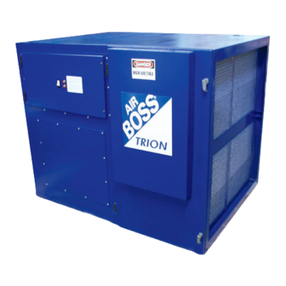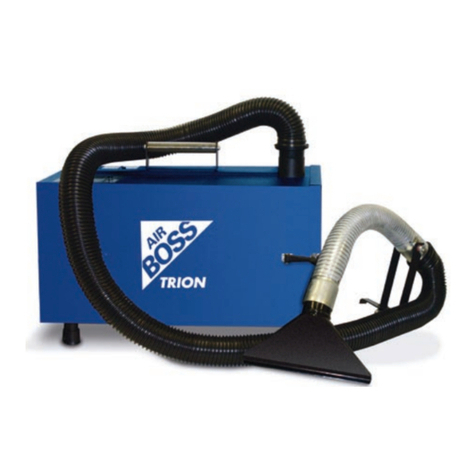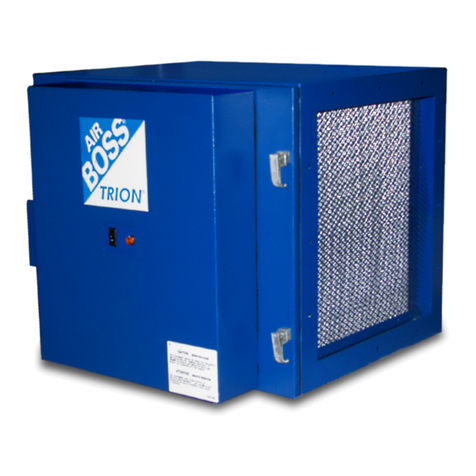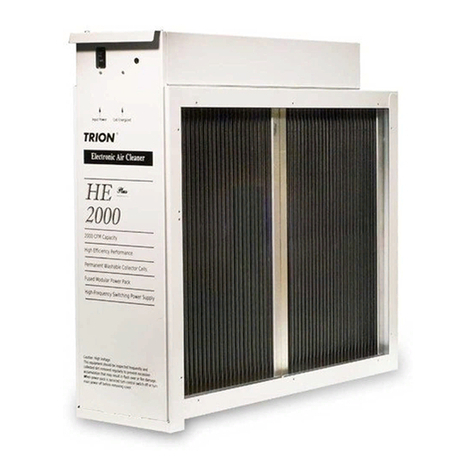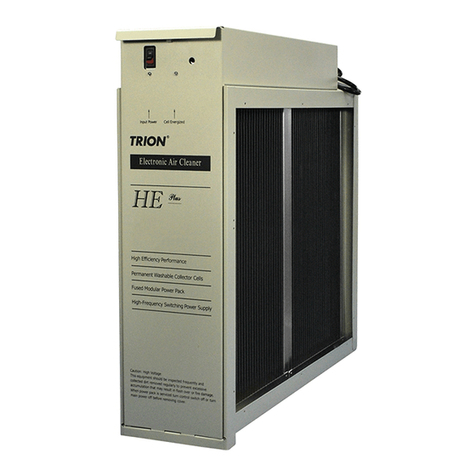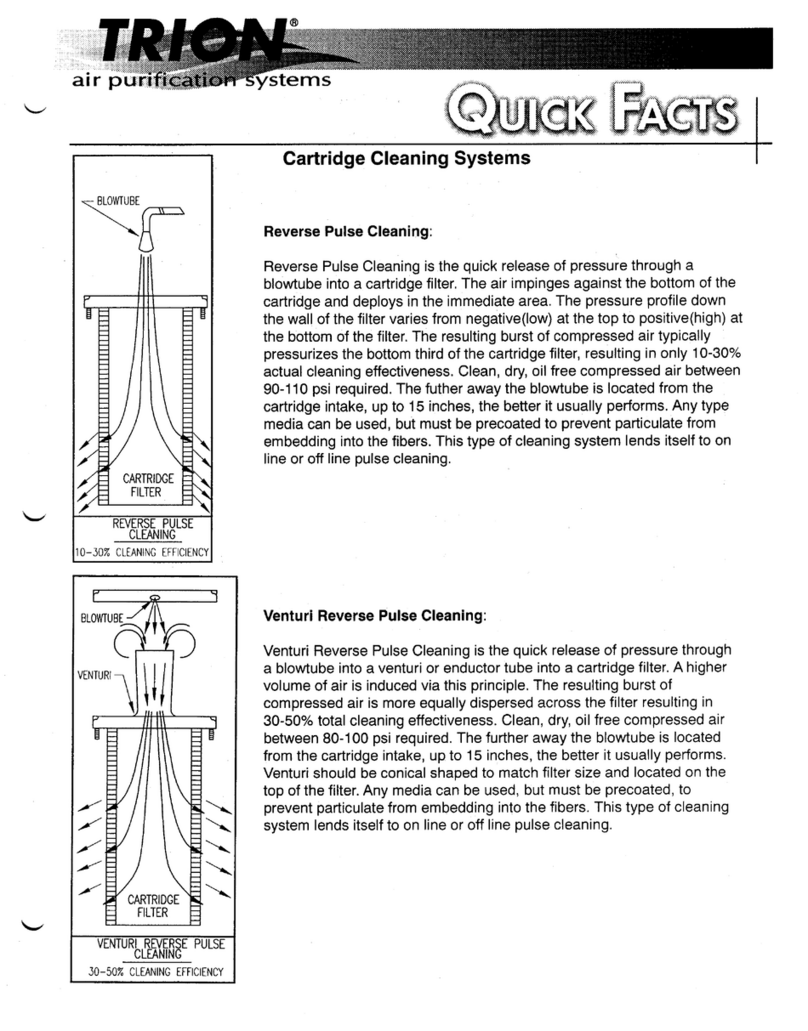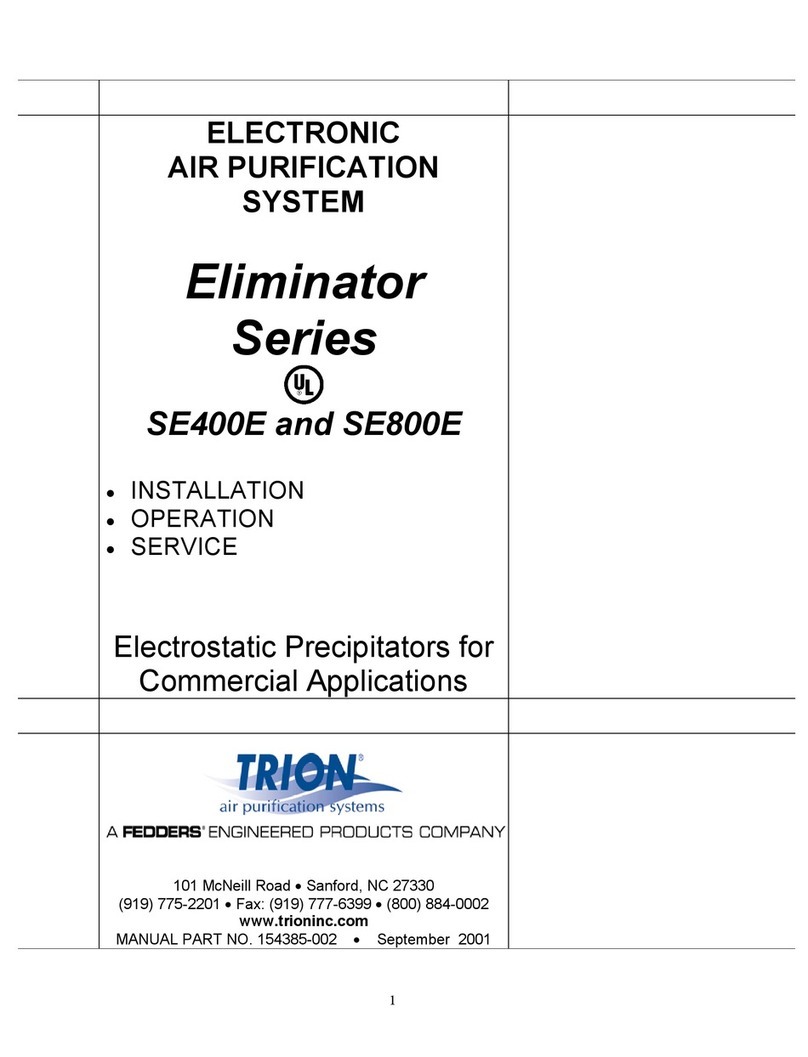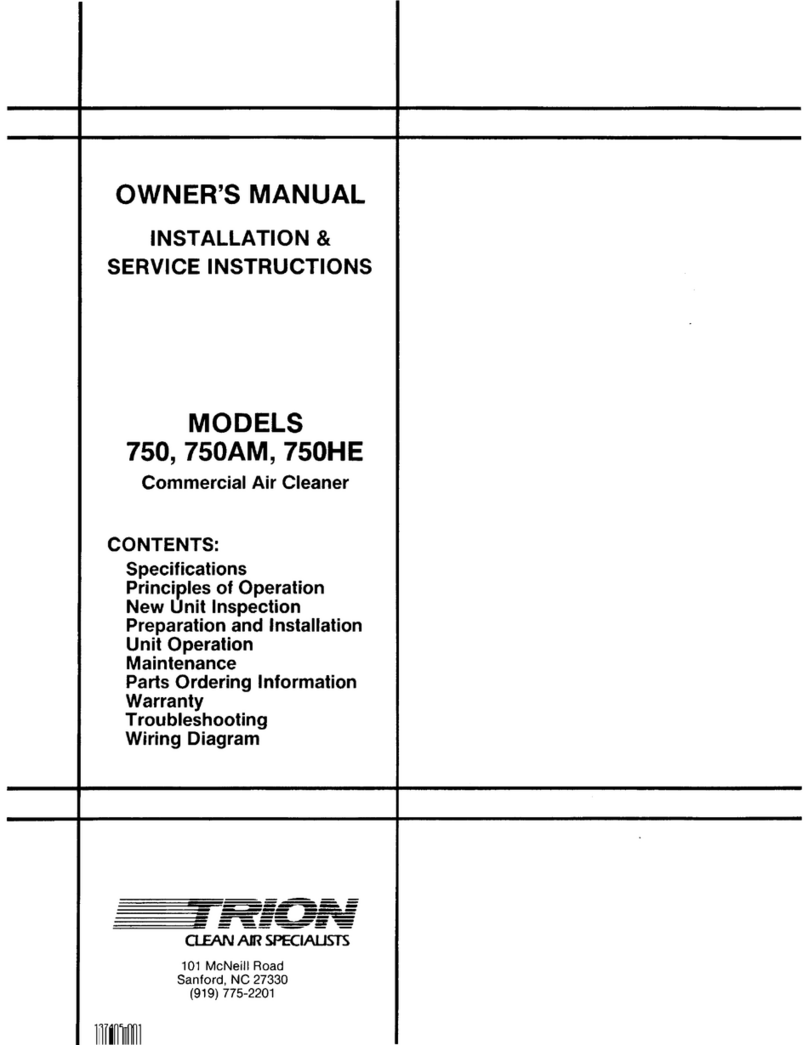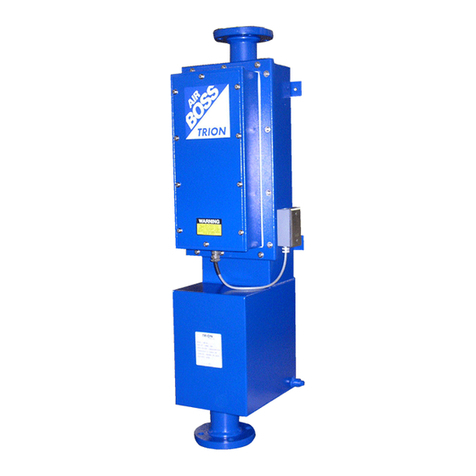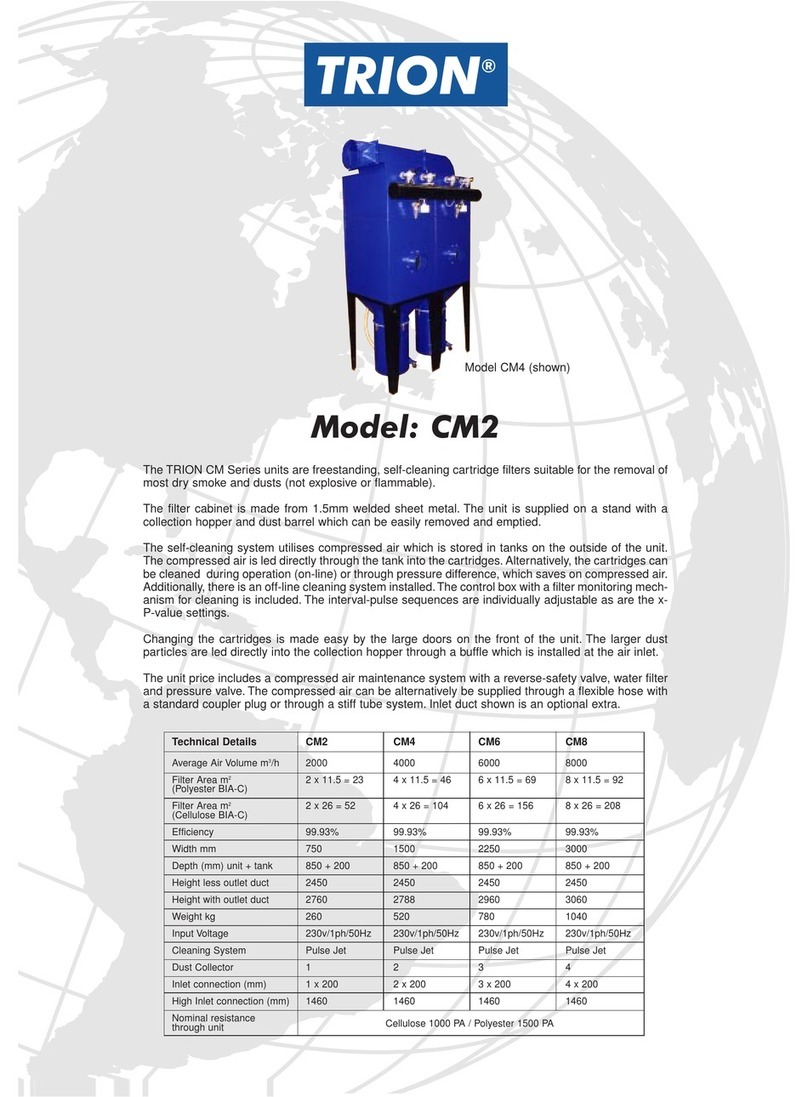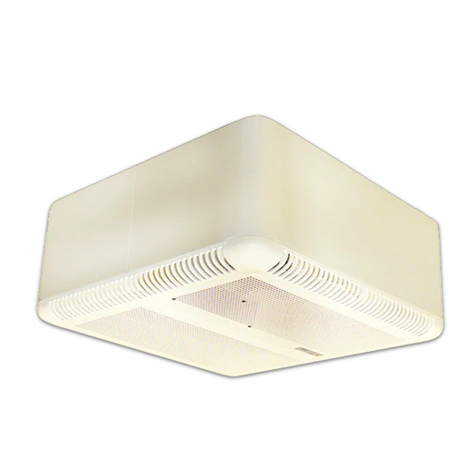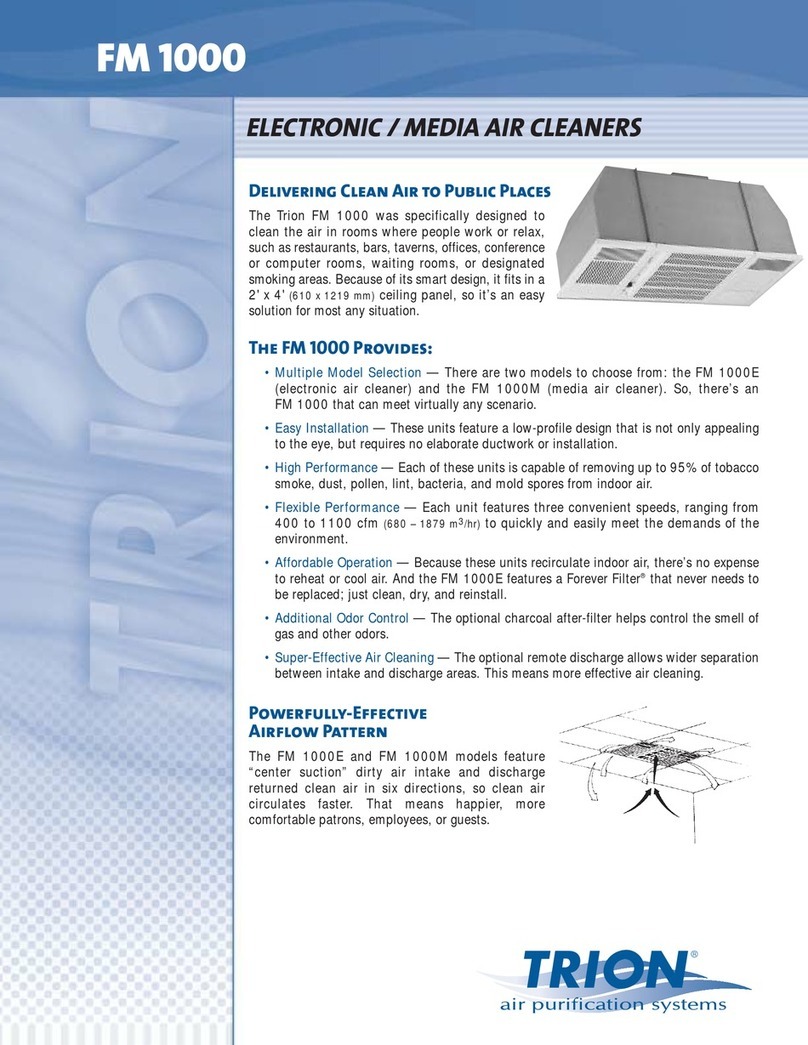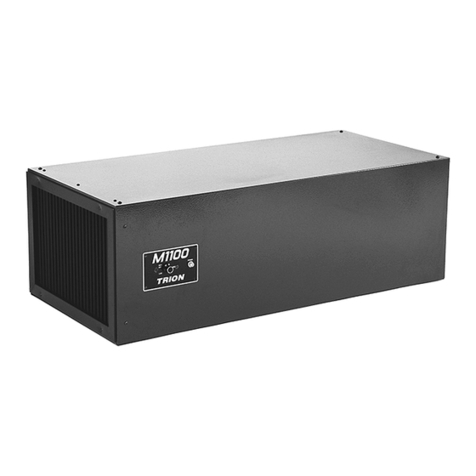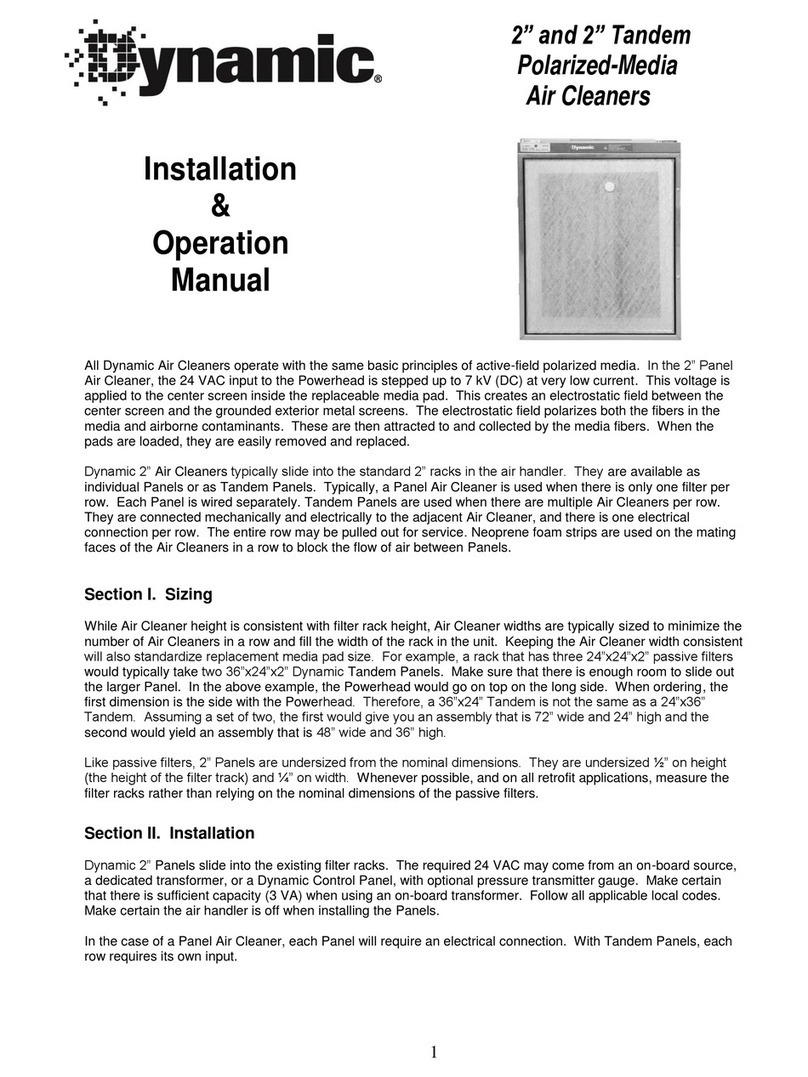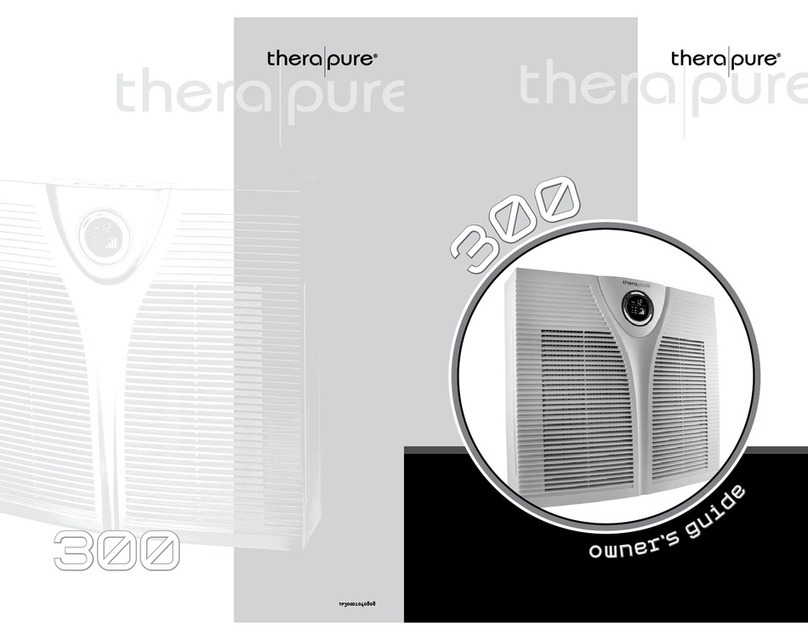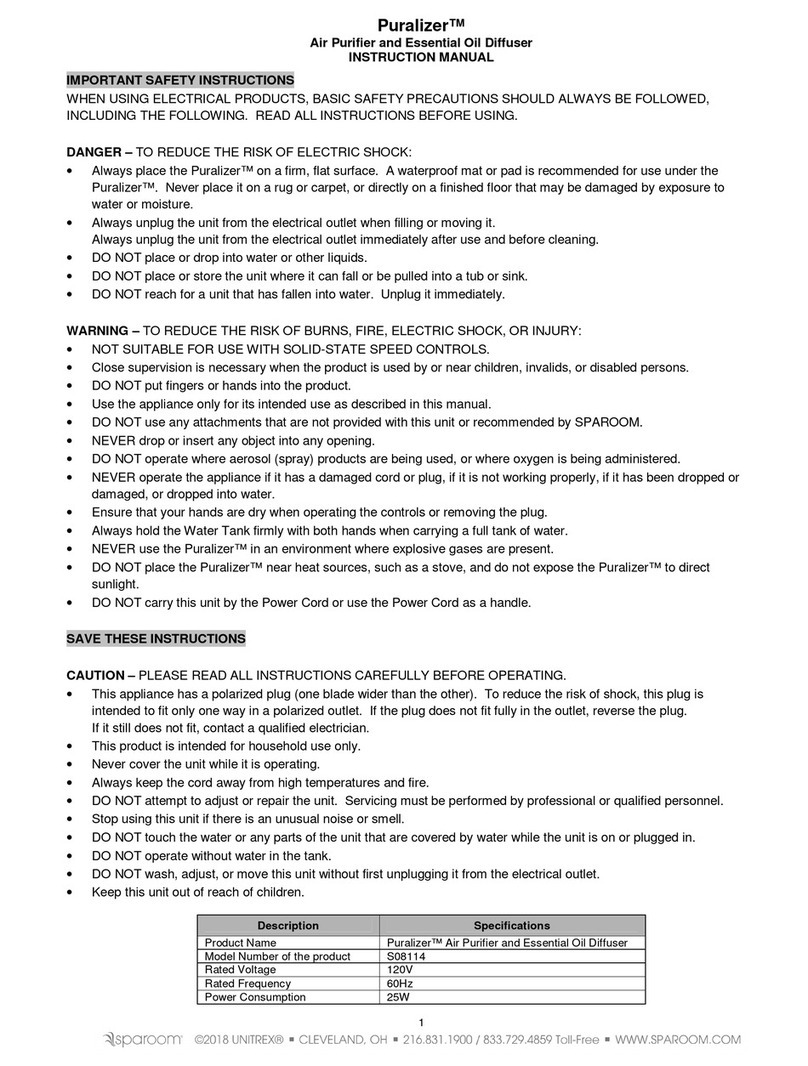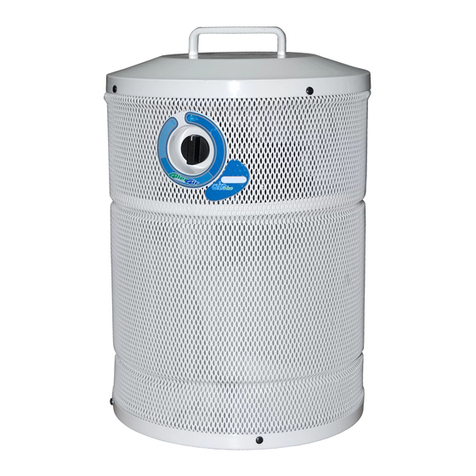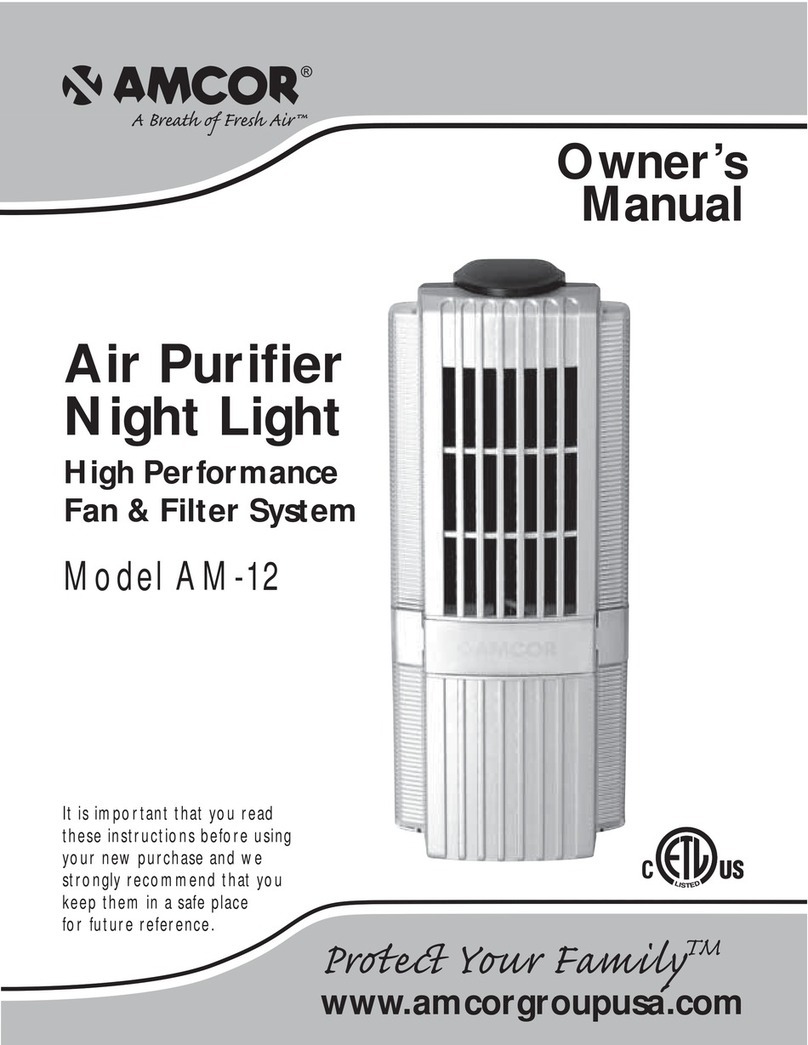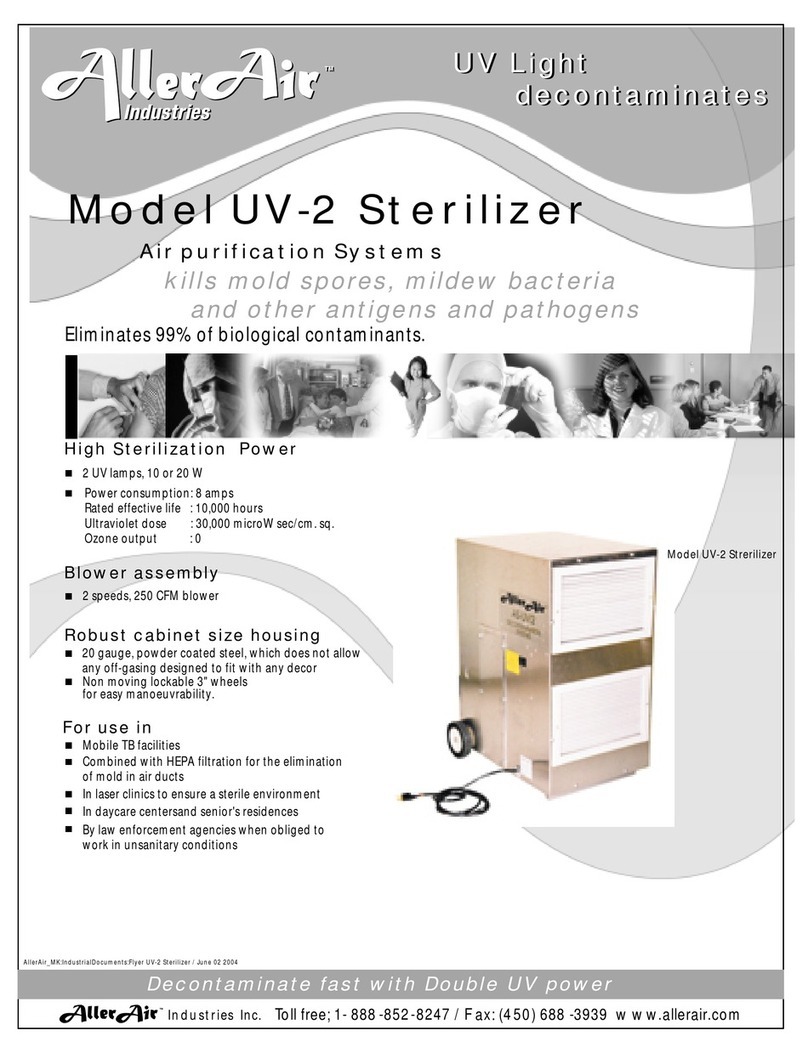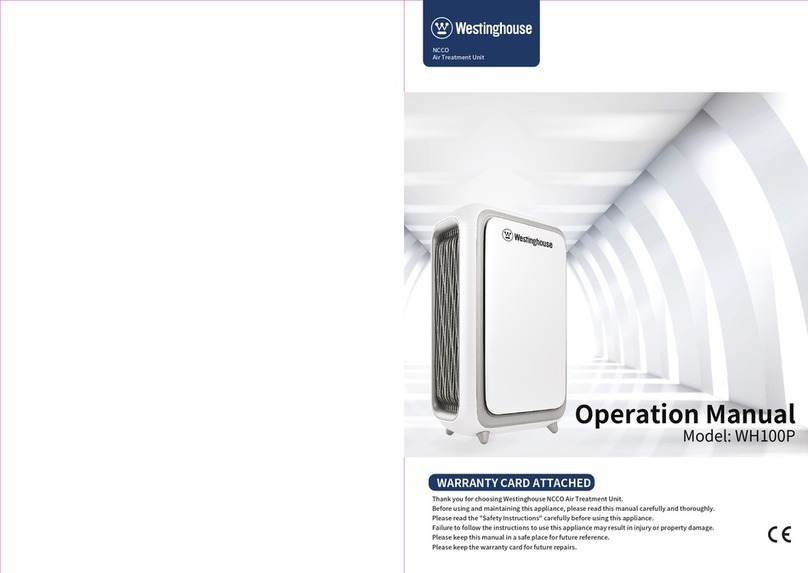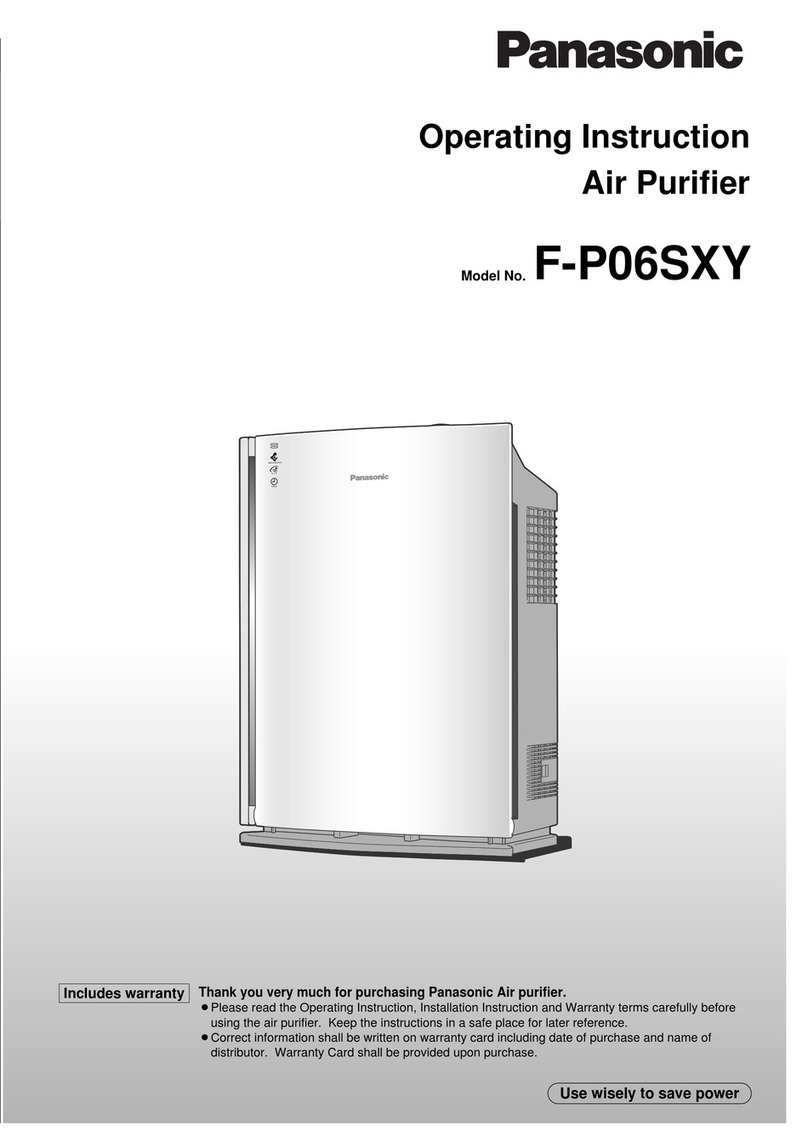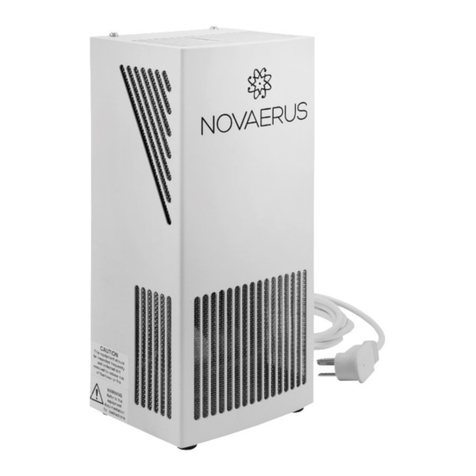
5
unit model, then secure the setting with the Allen
Head set screw located in the valve adjustment knob.
When the correct adjustment has been made, remove
the remaining water from the reservoir and fill the tank
with initial supply of detergent furnished.
N. When the wash control has cycled out and an initiator
time clock has been provided in the control for
automatic operation, set the clock as follows:
(a) Estimate the washing frequency desired. Normally
once per week is adequate for normal dirt loads.
(b) Each dial tab on the outer edge of the large hourly
time dial represent approximately 15 minutes.
These tabs can be tilted in and out with the
fingers.
(c) Tilt all the tabs outward.
(d) Select the time of the day the wash cycle is to be
initiated and tilt the dial tab on that time inward.
(e) Rotate the large hourly time dial counterclockwise
by hand until the correct time of day is indicated
by the triangle time arrow on the nameplate.
(f) The small seven spoke wheel at the lower right of
the large hourly time dial moves ahead once each
day at 2:00 a.m. Each spoke is marked with a day
of the week. Insert a knurled brass screw in all the
spokes except the spoke marked with the day the
unit is selected to wash. CAUTION: DO NOT
ATTEMPT TO INSERT SCREW IN SPOKE
WHILE IT IS POINTING TO THE LARGE
ARROW, IIF NECESSARY TURN THE SPOKE
WHEEL BY HAND. THEN INSERT THE SCREW.
(g) If later than 2:00 a.m., turn the spoked wheel by
hand until the present day of the week is opposite
the large arrow. (Between midnight and 2:00 a.m.
the setting must be made to the day just ended at
midnight.)
4. Wash Control and Detergent System Settings
The total time required for the complete wash cycle is 80
minutes. The four main events that take place during the
cycle are: Wash, Soak, Rinse and Dry. Once the Wash
Control has been initiated, either by manually pushing the
washer start button or through the means of an automatic
time clock, the time for each event is controlled by the
multi-cam timer located inside the control housing. The
time duration for each event within the 80 minute cycle is
adjustable.
In addition to the multi-cam timer settings, the detergent
cycle has two additional settings: A “fine tune” time
adjustment and a volume adjustment (ratio of detergent to
water). These adjustments enable the washing operation
to be set most effectively for the particulate type and
amount of dirt loading for a given installation. Some dirts
being more tenacious than others are more difficult to
remove and require a loner wash time or a stronger
detergent solution. Average settings have been factory set
and are outlines in the Control Schematic, sequence of
operation. Best possible setting for any given installation,
however, are best determined through experience.
Determination can be made by visually examining the
ionizing-collecting cells after the first few washings.
To change the multi-cam timer settings refer to Figure 4.
Each disc on the double disc cams is adjustable by
turning the adjusting screws located on the side of each
disc. The time between the “OFF” operation of Switch 3,
and the “ON” operation of Switch 4 is the soak time.
NOTE: Switch 3 controlling the detergent, should never be
set for less than 2 minutes (120 seconds). The detergent
time is “fine tuned” with the adjustable, 1.2 to 120 second
time delay relay, which overrides Switch 3.
To set the time for any given event except detergent,
simply turn the adjusting screws to adjust the length of the
cam recess. Open the recess to increase the time or close
the recess to decrease the time. When adjustment is
made to one of the cams the other cams, may have to be
adjusted to bring the time relationship between the cams
in proper sequence. The operation of any one event must
not overlap the operation of any other event.
To adjust the volume of detergent used within the given
time setting, loosen the knurled knob with an Allen wrench
on the control valve located in the by-pass line. Refer to
the Detergent System Outline. Turning the knob clockwise
increases the volume and counter clockwise decreases
the volume. When adjustment has been made, be sure to
retighten the set screw.
5. Routine Maintenance
A. Washing Frequency
The frequency that the collected dirt is to be washed
from the unit depends upon the type and amount of
dirt in the air to be cleaned. Dirt which is greasy in
nature tends to harden after collection and should be
washed away often. Likewise, units operating under
extremely heavy dirt loads should be washed more
often as a large build-up of collected material will have
a tendency to “blow-off” if permitted to remain on the
collecting elements for long periods of time. In that the
type and amount of dirt varies geographically (and
from one location to another in any given area) it is
recommended to start operation with a washing
frequency of at least once a week. This schedule may
then be altered as needed after visual examinations of
the collected material contained on the ionizing-
collecting cells. Daily washing is not unusual for units
operating on heavy welding fume or similar
contaminants.
B. Detergent
Effective washing is dependent upon detergent. The
detergent reservoir should be examined on a routine
basis, a minimum tank level established and never
permitted to empty. An empty tank not only means
poor washing, but can also be detrimental to the
pump. The inside of the tank should be kept clean,
free from dirt and foreign objects. The detergent, as
supplied by Trion, Inc., is formulated specifically for
Electronic Air Cleaners. If substitutes are used, they
should be safe for use in ventilation systems and non-
caustic, as 95% of the ionizing-collecting cells are
constructed of aluminum.













